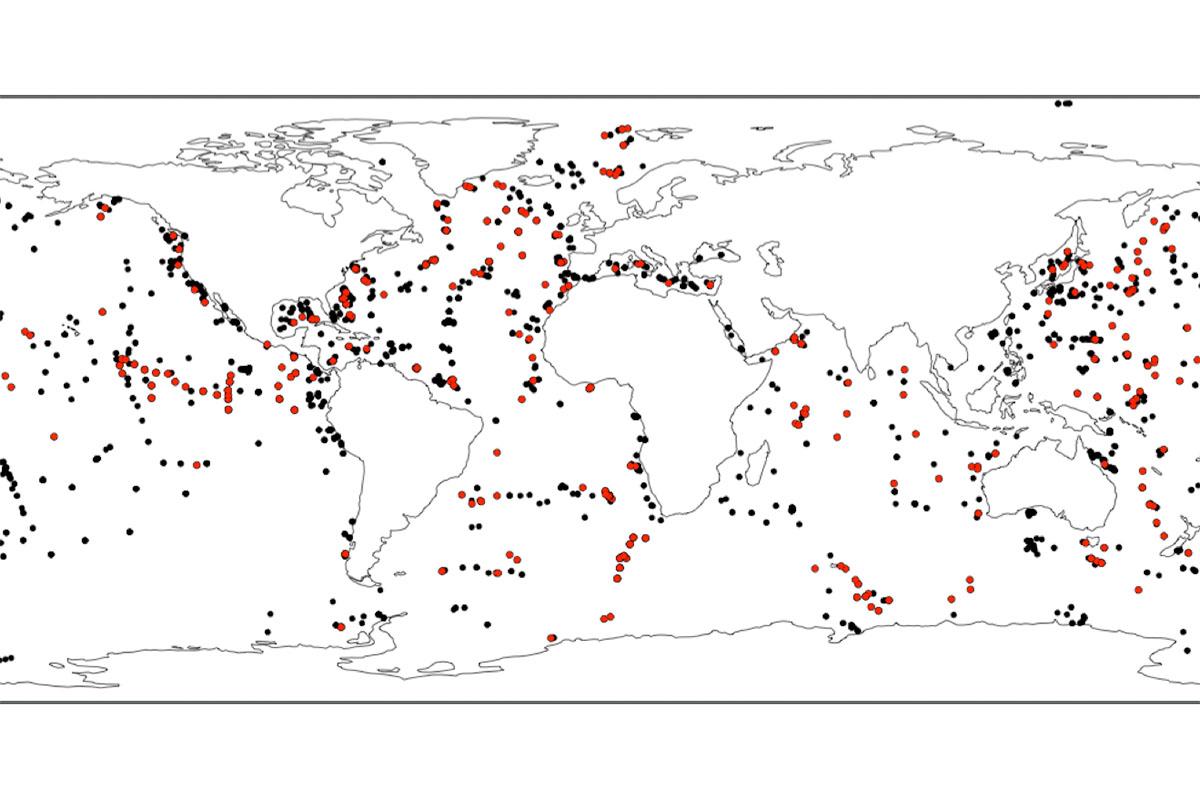NSB and PBDB are the two largest databases serving paleontology that synthesize published fossil occurrence data. PBDB covers the Phanerozoic record of invertebrate and vertebrates but at low time (ca 10 my) and taxonomic (genera) resolution. NSB covers only marine plankton from the last 100 my, but at far higher temporal and taxonomic resolution. Currently NSB has ca 800K occurrence records for ca 10K species, with an average age resolution of ca 300,000 years. NSB is used, as is PBDB, in paleobiology studies. NSB also though uniquely contains detailed geochronologic information for individual sections and biostratigraphic marker species, and is thus also used by paleoceanographers and other earth scientists. In all, nearly 100 publications cite or have used the system. Lastly, the taxonomic name lists in NSB are linked to other marine plankton taxonomy databases. NSB provides the source names to maintain the World Registry of Marine Species list of Polycystina (Radiolaria) and is linked to the main micropaleontology community online taxonomic catalog Mikrotax.
NSB was developed over more than 20 years at various institutions, with funding from national science agencies, the European Community, and CEES Oslo. The current implementation, developed and hosted by the MfN was largely written by Johan Renaudie and Patrick Diver (USA), with community support for taxonomic and geochronologic content (particularly Jeremy Young, UCL, London and Brian Huber, Smithsonian, USA).
More information on NSB:
Ten selected research publications that used the Neptune database (other than our own)
- Allen, A.P., and Gillooly, J.F., 2006, Assessing latitudinal gradients in speciation rates and biodiversity at the global scale: Ecology Letters, v. 9, p. 947–954.
- Liow, L.H., and Stenseth, N.C., 2007, The rise and fall of species: implications for macroevolutionary and macroecological studies: Proc. Royal Society B, v. 274, p. 2745–2752.
- Muttoni, G., and Kent, D.V., 2007, Widespread formation of cherts during the early Eocene climatic optimum: Palaeogeography, Palaeoclimatology, Palaeoecology, v. 253, p. 348–362.
- Finkel, Z.V., Sebbo, J., Feist-Burkhardt, S., Irwin, A.J., Katz, M.E., Schofield, O., Young, J., and Falkowski, P.G., 2007, A universal driver of macroevolutionary change in the size of marine phytoplankton over the Cenozoic: Proceedings of the National Academy of Sciences of the United States of America, v. 104, p. 20416–20420.
- Rabosky, D.L., and Sorhannus, U., 2009, Diversity dynamics of marine planktonic diatoms across the Cenozoic: Nature, v. 247, p. 183–187.
- Cermeño, P., and Falkowski, P.G., 2009, Controls on diatom biogeography in the ocean: Science, v. 325, p. 1539–1541.
- Cermeño, P., Castro-Bugallo, A., and Vallina, S.M., 2013, Diversification patterns of planktic foraminifera in the fossil record: Marine Micropalaeontology, v. 104, p. 38–43.
- Fenton, I.S., Pearson, P.N., Jones, T.D., Farnsworth, A., Lunt, D., Markwick, P.J., and Purvis, A., 2016, The impact of Cenozoic cooling on assemblage diversity in planktonic foraminifera: Phil. Trans. R. Soc. B (web).
- Powell, M.G., and Glazier, D.S., 2017, Asymmetric geographic range expansion explains the latitudinal diversity gradients of four major taxa of marine plankton: Paleobiology, 1–13 (web).
- Hannisdal, B., Haaga, K.A., Reitan, T., Diego, D., and Liow, L.H., 2017, Common species link global ecosystems to climate change: dynamical evidence in the planktonic fossil record: Proc. R. Society B., v. 284, p. 1–9 (web).
Recent research papers using NSB from our group
- Lazarus, D., Barron, J., Renaudie, J., Diver, P., and Türke, A., 2014, Cenozoic diatom diversity and correlation to climate change: PLOS One, v. 9, p. 1–18.
- Renaudie, J., 2016, Quantifying the Cenozoic marine diatom deposition history: links to the C and Si cycles: Biogeosciences, v. 13, p. 6003–6014.
- Wiese, R., Renuadie, J., and Lazarus, D., 2016, Testing the accuracy of genus-level data to predict species diversity in Cenozoic marine diatoms: Geology, v. 44
Papers describing the NSB/Neptune system, methods papers or general reviews of paleobiologic research using the database
- Lazarus, D.B., 1992, Age Depth Plot and Age Maker: age depth modelling on the Macintosh series of computers: Geobyte, v. 7, p. 7–13.
- Lazarus, D.B., 1994, The Neptune Project - a marine micropaleontology database: Math. Geol., v. 26, p. 817–832.
- Lazarus, D.B., Spencer-Cervato, C., Pianka-Biolzi, M., Beckmann, J.P., von Salis, K., Hilbrecht, H., and Thierstein, H.R., 1995, Revised chronology of Neogene DSDP holes from the world ocean: College Station, Ocean Drilling Program, v. 24, ca. 250 p. (also available here)
- Spencer-Cervato, C., 1999, The Cenozoic deep sea microfossil record: explorations of the DSDP/ODP sample set using the Neptune database: Palaeontologica Electronica, v. 2, p. web.
- Bohling, G., 2005, Chronos Age-Depth Plot: A Java application for stratigraphic data analysis: Geosphere, v. 1, p. 78–84.
- Fils, D., Cervato, C., Reed, J., Diver, P., Tang, X., Bohling, G., and Greer, D., 2009, CHRONOS architecture: Experiences with an open-source services-oriented architecture for geoinformatics: Comp. Geosci., v. 35, p. 774–782.
- Lazarus, D., 2011, The deep-sea microfossil record of macroevolutionary change in plankton and its study, in Smith, A., and McGowan, A., ed., Comparing the Geological and Fossil Records: Implications for Biodiversity Studies: London, The Geological Society, p. 141–166.
- Lazarus, D., Weinkauf, M., and Diver, P., 2012, Pacman profiling: a simple procedure to identify stratigraphic outliers in high density deep-sea microfossil data: Paleobiology, v. 38, p. 144–161.
- Renaudie, J., Diver, P., and Lazarus, D., 2015, Neptune NSB: a new, expanded and improved database of marine planktonic microfossil data: Geological Society of America, Abstracts with Programs, v. 47, p. 130.
- Yasuhara, M., Tittensor, D.P., Hellebrand, H., and Worm, B., 2017, Combining marine macroecology and palaeoecology in understanding biodiversity: microfossils as a model: Biological Reviews, 92:199-215.
